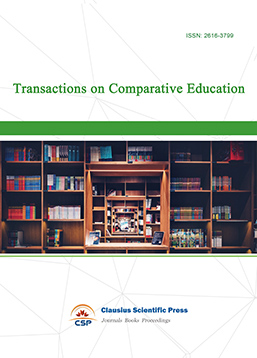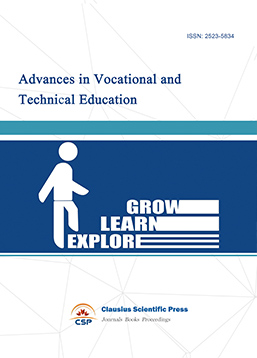Integrating Theory and Practice: An Experimental Pedagogy for Teaching Crude Oil Flow Properties
DOI: 10.23977/curtm.2025.080707 | Downloads: 6 | Views: 411
Author(s)
Huijun Su 1, Yongfei Li 2,3, Yan Zhang 1, Gang Chen 2,3
Affiliation(s)
1 Shaanxi Key Laboratory of Low Metamorphic Coal Clean Utilization, Value-Added Utilization of Carbon Coal Derivative Liquid-Shaanxi University Engineering Research Center, Yulin University, Yulin, China
2 Shaanxi Province Key Laboratory of Environmental Pollution Control and Reservoir Protection Technology of Oilfields, Xi'an Shiyou University, Xi'an, China
3 Shaanxi University Engineering Research Center of Oil and Gas Field Chemistry, Xi'an Shiyou University, Xi'an, China
Corresponding Author
Huijun SuABSTRACT
To further enhance the practical experimental skills of undergraduate students majoring in applied chemistry, a comprehensive experiment was developed focusing on crude oil viscosity, yield stress, viscosity-temperature behavior, and the evaluation of viscosity-reducing agents. By measuring various physical parameters of crude oil and assessing the performance of viscosity reducers, students gain a thorough understanding of crude oil characteristics and the effectiveness of flow improvers. This experimental design is highly targeted and practically relevant, effectively reinforcing students' comprehension of key physical properties of crude oil while strengthening their abilities in experimental operation, observation, and problem-solving. Moreover, the experiment not only consolidates foundational knowledge but also provides systematic training in literature research, experimental design, hands-on execution, data analysis, and the preparation of comprehensive laboratory reports.
KEYWORDS
Physical Parameters of Crude Oil; Comprehensive Experiment Design; Viscosity Reduction EffectCITE THIS PAPER
Huijun Su, Yongfei Li, Yan Zhang, Gang Chen, Integrating Theory and Practice: An Experimental Pedagogy for Teaching Crude Oil Flow Properties. Curriculum and Teaching Methodology (2025) Vol. 8: 52-60. DOI: http://dx.doi.org/10.23977/curtm.2025.080707.
REFERENCES
[1] Xiao Linbo, Xiao Rongge, Chen Junzhi. Research on characteristics of crude oil viscosity-temperature curve [J]. Liaoning Chemical Industry, 2015(8): 930-932.
[2] Liang Wenjie, Que Guohe, Liu Chenguang, Yang Qiushui. Petroleum chemistry (2nd Edition) [M]. Dongying: China University of Petroleum Press, 2009.
[3] Xu Bing, Liu Yizhe, Wu Yuguo. Determination and analysis of viscosity properties of mixed crude oil [J]. Contemporary Chemical Industry, 2018, 47(4): 806-808.
[4] Li Mengkun, Yan Xiaoyuan, Xu Xiaoying. A method for measuring the viscosity of very high water-cut oil system [J]. Journal of Northeast Petroleum University, 2005, 29(2): 22-24.
[5] Chen Gang, Cheng Chao, Zhang Jie. Comprehensive experiment of sludge cleaning treatment using colloid interface chemistry [J]. Journal of Chengde Petroleum College, 2018, 20(6): 32-35.
[6] Wang Shuai, Yu Shuang, Hong Shuai. Research progress of oil-water emulsion demulsification technology [J]. Contemporary Chemical Industry, 2017, 46(1): 138-140.
[7] Chen Gang, Zhang Jianjia, Zhang Jie. Comprehensive experiment on the production of green oilfield chemicals using waste [J]. Chemistry Education, 2015, 36(8): 58-60.
[8] National Energy Administration. SY/T 7547-2024 Determination of crude oil yield value by rotational viscometer [S]. Beijing: Petroleum Industry Press, 2025.
[9] State Bureau of Petroleum and Chemical Industry. SY/T 7549-2000 Determination of viscosity-temperature charts for crude oil with rotational viscometers [S]. Beijing: Petroleum Industry Press, 2000.
[10] Liu Xiaohong, Wu Tingting, Ge Taotao, Du Chunxiao, Wang Dawei, Geng Zhigang. Analysis on in-situ enhanced oil recovery technology for heavy oil and extra-heavy oil [J]. Contemporary Chemical Industry, 2023, 52 (5): 1224-1230.
[11] Wei Jun, Xu Qinghai, Liu Shiyan, Luo Renkai. Discussion on auxiliary steam injection production of viscosity reducer in heavy oil well [J]. Petrochemical Industry Technology, 2022, 29(07): 52-54.
[12] Gang Chen, Fan Zhang, Jie Zhang. Environment education—An example of a comprehensive experiment of preparing drilling fluid using guar gum fracturing backflow fluid [J]. Advances in Social Science Education and Humanities Research, 2018, 177: 473-477.
[13] Chen Gang, Wang Zili, Wang Yuanyuan. Comprehensive experimental design for determination of sulfur ion content in oilfield produced water, Progress in Analytical Chemistry, 2018, 8(4): 165-171.
[14] Tang Ying, Chen Yuankai, Li Tingting. Design of a comprehensive experimental of the synthesis of glycerol carbonate catalyzed by modified CaO [J]. Innovative Education Research, 2018, 6(2): 73-78.
[15] Xu Jingfang, Chang Xiaofeng, Zhang Jie. Design of an applied chemistry comprehensive experiment of orange peel as flocculant in waste drilling fluid, DEStech Transactions on Social Science Education and Human Science, ICESSH 2018: 263-267.
[16] Chen Shijun, Guo Jun, Yang Jigang. Design of an applied chemistry comprehensive experiment of control and sealing using peanut shell, DEStech Transactions on Social Science Education and Human Science, ICESSH 2018: 268-272.
[17] Xue Dan, Luo Hang, Chen Gang. Experiment design of dynamic paraffin deposition and evaluation of water-based paraffin remover, DEStech Transactions on Social Science Education and Human Science, ICESSH 2018: 303-306.
[18] Li Hongying, Feng Jie. Quantitative analysis based on wax crystal micrographs to determine the wax precipitation point of crude oil [J]. Gas Storage and Transportation, 2013, 32(1): 23-26.
[19] Mei Deping. The Influence of viscosity characteristics of crude oil of Xinjiang oilfield on gathering process [J]. Oilfield Surface Engineering, 2015(5): 22-24.
| Downloads: | 40327 |
|---|---|
| Visits: | 1749900 |

 Download as PDF
Download as PDF



